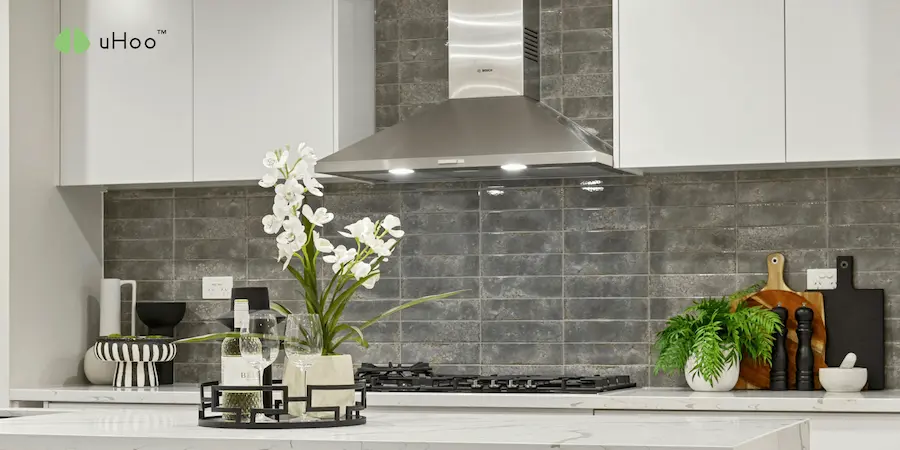Did you know that cooking can be a major source of indoor air pollution, often leading to air quality that is far worse than what’s outdoors? Frying, searing, and even boiling water can release a host of harmful contaminants into your home. These pollutants can include microscopic particulate matter (PM2.5), which can penetrate deep into your lungs, as well as volatile organic compounds (VOCs) and dangerous gases like carbon monoxide (CO) and nitrogen dioxide (NO2) from gas stoves.
Understanding how to avoid air pollutants from this common daily activity is crucial for creating a healthy home environment. The first and most critical step is to have the right ventilation system.
Your range hood is your home’s primary defense against cooking-related pollutants. Its function is to capture airborne contaminants at the source and remove them from your indoor environment. But not all range hoods are created equal in this vital task. The most effective method is a ducted range hood.
A ducted system uses a powerful fan to suck in polluted air and physically expel it to the outdoors through a ductwork system. This active removal process is the key to truly cleaning your air. It’s highly effective at removing grease and odors, but more importantly, it’s the only type of hood that can eliminate hazardous gases like CO and NO2, which are silent threats to your health. A ducted hood also helps control humidity, preventing the build-up of moisture that can lead to mold and other problems.
In contrast, a ductless, or recirculating, range hood does not remove pollutants. Instead, it pulls in air, passes it through filters to trap grease and some odors, and then blows the air back into the kitchen.
While this can make your kitchen feel cleaner by reducing visible smoke and some smells, it does nothing to remove the most dangerous airborne pollutants. Harmful gases and excess moisture remain in your home, creating a potentially unhealthy environment. This is why if you’re serious about how to avoid air pollutants, a ducted system is the essential choice.
Beyond choosing the right type of range hood, there are a few practical tips you can follow to maximize its effectiveness:
- Always Use Your Hood: Make a habit of turning your range hood on as soon as you start cooking and leaving it on for a few minutes after you’re done. This gives it enough time to clear all the lingering pollutants.
- Utilize the Back Burners: Cooking on the back burners places your pots and pans closer to the hood’s vent, making it easier for the system to capture smoke and fumes.
- Create a Negative Pressure Environment: Open a window or door slightly while the range hood is running. This creates a slight negative pressure that helps pull fresh air into the home, making the exhaust more efficient.
A range hood is a fantastic tool for your kitchen, but it’s just one part of a comprehensive indoor air quality strategy. To truly understand how to avoid air pollutants and if your range hood is working, you need to be able to see the invisible.
An air quality monitor, such as uHoo, can give you that power. By measuring key pollutants like PM2.5, carbon monoxide, and nitrogen dioxide in real-time, uHoo can show you the direct impact of your range hood. You can watch as your PM2.5 levels drop when you use your ducted hood, providing tangible proof that your efforts are paying off and your home is a healthier place.

